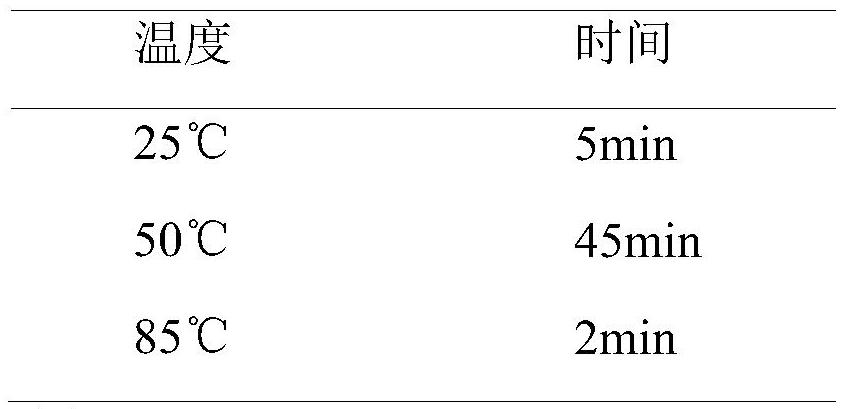Primer and probe for detecting Zika virus
A Zika virus and probe technology, applied in biochemical equipment and methods, microorganisms, and methods based on microorganisms, etc., can solve the problems of missed treatment time, difficult diagnosis of patients, long time, etc., to achieve optimal concentration, effective detection, And the effect of accurate detection
- Summary
- Abstract
- Description
- Claims
- Application Information
AI Technical Summary
Problems solved by technology
Method used
Image
Examples
Embodiment 1
[0029] The design of embodiment 1 primer and probe
[0030] 1. Experimental method
[0031] By comparing and analyzing the known Zika virus gene sequences in all GenBank databases, selecting highly conserved segments, and verifying the specificity of the primers and the homology of similar pathogens by BLAST, a detection method for the above pathogens was designed. primers and probes.
[0032] 2. Experimental results
[0033] Primers and probes for Zika virus E gene were designed.
[0034] Wherein, the nucleotide sequence of the upstream primer is the nucleotide sequence shown in SEQ ID NO: 1,
[0035] The nucleotide sequence of the downstream primer is shown in SEQ ID NO: 2,
[0036] The nucleotide sequence of the specific probe is shown in SEQ ID NO: 3, its 5' end is fluorescently labeled with FAM, and its 3' end is fluorescently labeled with BHQ1.
Embodiment 2
[0037] Embodiment 2 A kind of kit for detecting Zika virus
[0038] 1. Composition
[0039] A primer whose nucleotide sequence is shown in SEQ ID NO: 1-2;
[0040] The nucleotide sequence is shown in SEQ ID NO: 3, the 5' end is fluorescently labeled with FAM, and the 3' end is fluorescently labeled with BHQ1 probe;
[0041] SEQ ID NO: 1: CCGCTGCCCAACACAAG,
[0042] SEQ ID NO: 2: CCACTAACGTTCTTTTGCAGACAT,
[0043] SEQ ID NO: 3: AGCCTACCTTGACAAGCAGTCAGACACTCAA.
[0044] 2. How to use
[0045] 1. Total RNA extraction
[0046] (1) Add 200ul RNAiso Plus or Triziol (the amount used when extracting RNA from a whole Aedes mosquito) to a 2ml RNase-free centrifuge tube, homogenize at 30Hz for 30s. Transfer the liquid to a 1.5ml RNase-free centrifuge tube and let stand for 15min.
[0047](2) Add 1 / 5 volume (40 μl) of chloroform to the above lysate, close the cap of the centrifuge tube tightly, and vortex to mix. After the solution was fully emulsified (no phase separation), let s...
Embodiment 3
[0071] The detection of embodiment 3 positive samples
[0072] 1. Experimental method
[0073] The kit of Example 2 was used to detect Aedes albopictus infected with Zika virus. At the same time, virus titer titration (TCID 50 / ml), TCID 50 That is half the infectious dose of tissue cell culture, with 1TCID 50 / ml of virus infects Aedes albopictus. One Aedes albopictus infected with Zika virus was used as the sample to be tested, and the kit in Example 2 was used for detection.
[0074] 2. Experimental results
[0075] See the test results figure 1 , only one amplification curve shows that the above primers and probes have good specificity.
PUM
 Login to View More
Login to View More Abstract
Description
Claims
Application Information
 Login to View More
Login to View More - R&D
- Intellectual Property
- Life Sciences
- Materials
- Tech Scout
- Unparalleled Data Quality
- Higher Quality Content
- 60% Fewer Hallucinations
Browse by: Latest US Patents, China's latest patents, Technical Efficacy Thesaurus, Application Domain, Technology Topic, Popular Technical Reports.
© 2025 PatSnap. All rights reserved.Legal|Privacy policy|Modern Slavery Act Transparency Statement|Sitemap|About US| Contact US: help@patsnap.com



